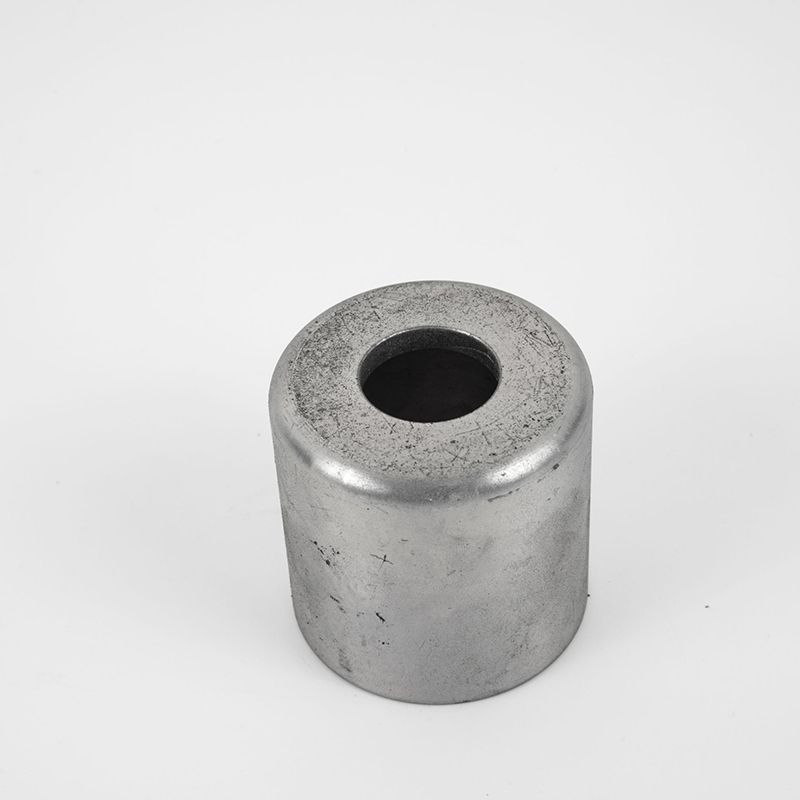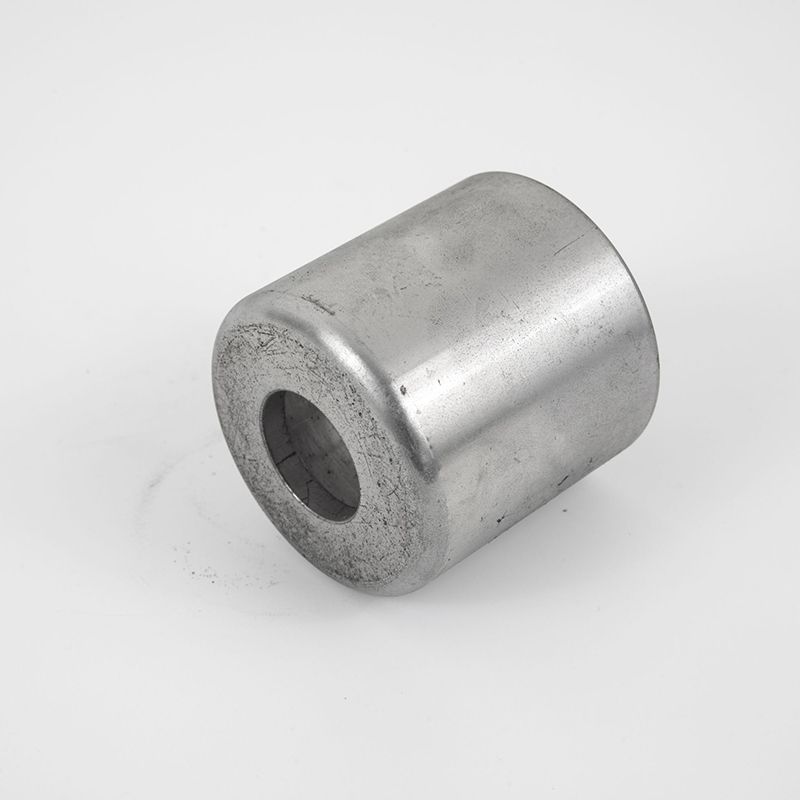Products
Metal Turning Machining
As the professional manufacturer, we would like to provide you Metal Turning Machining. And we will offer you the best after-sale service and timely delivery.Metal turning machining is a manufacturing process that involves using a lathe machine and cutting tools to remove excess material from a piece of metal and create a finished product with precise dimensions and desired shape. The lathe rotates the workpiece on its axis, while a cutting tool gradually shapes it, with the aim of creating the desired geometric design.
Send Inquiry
Product Description
What is Metal Turning Machining?
Metal turning machining is a manufacturing process that removes excess material from a piece of metal using a lathe machine and cutting tools to create a finished product with precise dimensions and desired shape. The process involves rotating the workpiece on its axis, while a cutting tool gradually removes material until the desired shape is achieved.
The process of metal turning machining begins with the selection of the right type of metal for the project, given the intended use. The metal is cut to the desired length and shape and mounted on the lathe. The cutting tool is selected based on the specific design requirements for the finished product. The lathe rotates the workpiece while the cutting tool gradually removes material until the desired shape and dimensions have been achieved.
Metal turning machining can produce a wide range of parts and components, such as shafts, bushings, pulleys, and spindles. It is widely used across numerous industries, including automotive, aerospace, construction, and more. The process offers precise and efficient manufacturing of high-quality parts with low lead times and is highly flexible, making it an attractive option for many manufacturing needs.
Overall, metal turning machining is a cost-effective and efficient manufacturing process that offers high precision, consistency, and flexibility, making it a popular option for a wide range of applications.
The process of metal turning machining begins with the selection of the right type of metal for the project, given the intended use. The metal is cut to the desired length and shape and mounted on the lathe. The cutting tool is selected based on the specific design requirements for the finished product. The lathe rotates the workpiece while the cutting tool gradually removes material until the desired shape and dimensions have been achieved.
Metal turning machining can produce a wide range of parts and components, such as shafts, bushings, pulleys, and spindles. It is widely used across numerous industries, including automotive, aerospace, construction, and more. The process offers precise and efficient manufacturing of high-quality parts with low lead times and is highly flexible, making it an attractive option for many manufacturing needs.
Overall, metal turning machining is a cost-effective and efficient manufacturing process that offers high precision, consistency, and flexibility, making it a popular option for a wide range of applications.
Why is it Called Metal Turning Machining?
Metal turning machining is called as such because it uses a lathe machine to rotate the metal workpiece on its axis while a cutting tool shapes it into a finished product or part. The lathe machine can move the cutting tool along the surface of the metal, removing excess material to create the desired shape. The turning motion of the lathe, combined with the cutting tool's movement on the metal surface, allows for highly precise and accurate shaping of the material.
The process is called "metal turning" because it involves turning or rotating the metal workpiece on the lathe machine while cutting edge tools gradually remove material from the workpiece to create the desired shape. The process can work with various types of metal, including steel, aluminum, copper, and brass, among others. In this way, metal turning machining is a highly versatile process used across numerous industries to create custom parts and components.
The process is called "metal turning" because it involves turning or rotating the metal workpiece on the lathe machine while cutting edge tools gradually remove material from the workpiece to create the desired shape. The process can work with various types of metal, including steel, aluminum, copper, and brass, among others. In this way, metal turning machining is a highly versatile process used across numerous industries to create custom parts and components.
What is the Metal Turning Machining Process?
The metal turning machining process is a manufacturing method in which a metal workpiece is rotated while a cutting tool is traversed along two or more axes of motion to remove material in order to achieve the desired shape or dimensions. Typically, the workpiece is held in place by a chuck or similar device, and the cutting tool is mounted on a carriage that can move along the length and width of the workpiece. This process is used for producing a wide variety of round and non-round shapes, such as cylinders, spheres, cones, and custom profiles. It is widely used in the production of precision parts for industries such as aerospace, automotive, and medical devices.
What Materials can be Metal Turning Machining?
Numerous materials can be turned on a lathe using the metal turning machining process. While metallic materials are the most common, non-metallic materials can also be machined in this way. Some examples of materials that can be turned on a lathe include:
Metals: Aluminum, copper, brass, steel, titanium, nickel alloys, and many others
Plastics: Acrylic, polycarbonate, nylon, ABS, PVC, and others
Wood: Hardwood, softwood, and exotic woods
Ceramic materials
Composites: Carbon fiber reinforced polymer (CFRP), glass fiber reinforced polymer (GFRP), etc.
Precious Metals: Silver, Gold.
The type of material chosen will depend largely on the desired properties of the finished product, as well as the requirements of the application in which it will be used.
Metals: Aluminum, copper, brass, steel, titanium, nickel alloys, and many others
Plastics: Acrylic, polycarbonate, nylon, ABS, PVC, and others
Wood: Hardwood, softwood, and exotic woods
Ceramic materials
Composites: Carbon fiber reinforced polymer (CFRP), glass fiber reinforced polymer (GFRP), etc.
Precious Metals: Silver, Gold.
The type of material chosen will depend largely on the desired properties of the finished product, as well as the requirements of the application in which it will be used.
What is Metal Turning Machining Used For?
Metal turning machining is a versatile process that is used for a variety of applications across many industries. Some of the common uses include:
Manufacturing of precision components: The process of metal turning machining allows for the production of high-quality, close tolerance components that meet specific design requirements.
Mass production of parts: Turning machines can be set up for high volume production of identical parts with consistent quality.
Repair and maintenance of machined parts: Many industrial machines rely on precision parts that may wear out or break over time. Metal turning machining can be used to repair such parts or manufacture new ones.
Aerospace and automotive industries: These industries rely heavily on metal turning machining to produce engine parts, electrical components, and other precision machine components.
Medical industry: This industry often requires high-precision components such as surgical instruments and implantable medical devices, which can be produced using metal turning machining.
Defense Industry: It is used for high precision and high-performance parts such as missiles, tanks, fighter jets, etc.
Overall, metal turning machining is a widely used process in manufacturing and is essential for the production of many different types of components and p
Manufacturing of precision components: The process of metal turning machining allows for the production of high-quality, close tolerance components that meet specific design requirements.
Mass production of parts: Turning machines can be set up for high volume production of identical parts with consistent quality.
Repair and maintenance of machined parts: Many industrial machines rely on precision parts that may wear out or break over time. Metal turning machining can be used to repair such parts or manufacture new ones.
Aerospace and automotive industries: These industries rely heavily on metal turning machining to produce engine parts, electrical components, and other precision machine components.
Medical industry: This industry often requires high-precision components such as surgical instruments and implantable medical devices, which can be produced using metal turning machining.
Defense Industry: It is used for high precision and high-performance parts such as missiles, tanks, fighter jets, etc.
Overall, metal turning machining is a widely used process in manufacturing and is essential for the production of many different types of components and p
What are the benefits of Metal Turning Machining?
There are several benefits of metal turning machining, which make it a popular manufacturing process. Some of these benefits include:
High precision: Metal turning machining allows for the production of parts with very high precision, often with tolerances of just a few microns.
Versatility: This process can be used to machine a wide variety of materials, including metals, plastics, and composites.
Efficiency: Metal turning machining is a relatively fast and efficient process for producing high-quality parts, especially when using automated or computer-controlled machines.
Flexibility: The process can be easily adapted to produce a variety of different parts with varying shapes, sizes, and complexities.
Reduced Waste: Modern metal turning machining equipment and tools can be programmed to optimize material usage, which reduces scrap and minimizes material waste.
Cost-effectiveness: Metal turning machining is a highly cost-effective manufacturing process, especially for producing large volumes of parts.
Overall, metal turning machining offers precision, versatility, efficiency, flexibility, reduced waste, and cost-effectiveness, making it a popular choice for producing high-quality parts in many industries.
High precision: Metal turning machining allows for the production of parts with very high precision, often with tolerances of just a few microns.
Versatility: This process can be used to machine a wide variety of materials, including metals, plastics, and composites.
Efficiency: Metal turning machining is a relatively fast and efficient process for producing high-quality parts, especially when using automated or computer-controlled machines.
Flexibility: The process can be easily adapted to produce a variety of different parts with varying shapes, sizes, and complexities.
Reduced Waste: Modern metal turning machining equipment and tools can be programmed to optimize material usage, which reduces scrap and minimizes material waste.
Cost-effectiveness: Metal turning machining is a highly cost-effective manufacturing process, especially for producing large volumes of parts.
Overall, metal turning machining offers precision, versatility, efficiency, flexibility, reduced waste, and cost-effectiveness, making it a popular choice for producing high-quality parts in many industries.
Product details



Hot Tags: Metal Turning Machining, China, Manufacturer, Supplier, Factory, Customized, Made in China
Related Category
Investment Casting
Shell Mold Sand Casting
Lost Foam Casting
Water Glass Casting
Lost Wax Casting
Die Casting
Precision Machining
CNC Machining
Turning Machining
Machining Workshop
Send Inquiry
Please Feel free to give your inquiry in the form below. We will reply you in 24 hours.








